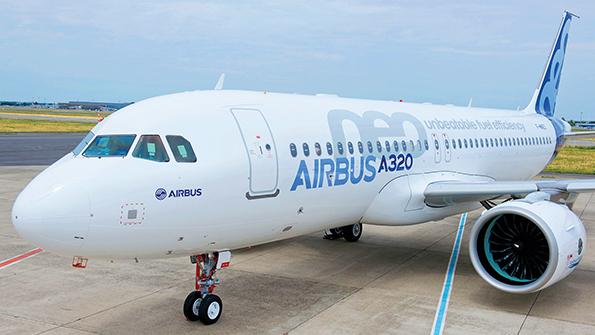
Before COVID-19 turned the aerospace and defense (A&D) manufacturing and aftermarket worlds on their heads, a key issue clouding suppliers’ outlooks was how much encroachment to expect from Airbus, Boeing and Tier 1s looking to elbow into their markets.
Boeing, especially, was pursuing vertical integration aggressively, having declared new core business sectors in avionics, auxiliary power units and flight controls, as well as issuing eye-watering corporate goals such as achieving $50 billion in revenue from its new Boeing Global Services as soon as next year.
- Expect more vertical integration from newer faces
- Airbus retains aerostructures divisions
What now in the post-pandemic world? During several recent trade shows, webinars and Aviation Week interviews, advisors and analysts have shed light on where they think industry giants are going next and why. The takeaway: Expect more vertical integration from newer faces and less from past performers.
“Boeing is going to recalibrate its whole vertical integration strategy,” said Kevin Michaels of AeroDynamic Advisory recently. “The pendulum has probably swung too far.”
Boeing’s vertical integration strategy emanated from a 15-year “supercycle” of rising production rates and supply-chain bottlenecks, as well as envy over higher supply-chain operating margins. In that extraordinary era—double the average commercial aerospace business cycle—vertical integration made sense.
But that is not the world as we know it today. “We’re in this period now of abundance of capacity and resources rather than scarcity,” Michaels told Aviation Week. “Boeing has to revisit these and scale back in many areas.”
Some just seem off limits. In terms of the next Boeing aircraft, it is hard to see the company doing better than aerostructures leader Spirit AeroSystems is doing, particularly as Spirit has bolstered its business model recently with diversification and the acquisition of the former Short Brothers assets from Bombardier. Boeing would need to make serious investments to match Spirit, unlikely since Boeing has more than $40 billion in net debt.
Still, Michaels does not believe Boeing will unwind all vertical integration. For example, the insourcing of aftermarket distribution, such as through the KLX Aerospace acquisition, was a good move, he said. But application of the strategy will be far more discrete. “It’s a mixed message, but they definitely have to back off of it,” he said.
Indeed, the discrete approach could be playing out at Airbus, which did not pursue vertical integration nearly as much as Boeing before COVID-19. But Airbus may do more now.
When Airbus last year terminated plans to vertically integrate on the A320neo-bound Pratt & Whitney geared turbofan nacelle, many observers took it as a clear sign the tide had turned on vertical integration strategies. But in recent announcements, Airbus has brushed back those expectations by declaring aerostructures a core function after having tried to sell off its related assets for years (AW&ST May 3-16, p. 19).
Not only will Premium Aerotec and Stelia Aerospace not be sold, they will be reorganized into wholly owned Airbus companies. A third company is planned to focus on detailed parts.
Richard Apps of Counterpoint Market Intelligence follows the logic. “I take Airbus at their word,” he said. Aerostructures can be core in a post-pandemic world of greater environmental priorities and more efficient aircraft.
Some observers see confirmation in Boeing’s recent comments. CEO Dave Calhoun has said aircraft design will be more important to new airliner offerings going forward. The aircraft-maker will not just rely on powerplant improvements, as was done in the past.
Still, not everyone is convinced. “When Airbus said it was keeping aerostructures, I was wondering if that was code for, ‘We were unable to sell,’” Michaels said. “This is much more about preserving the European supply chain that Airbus and others worked 50 years to create than preserving ‘core’ capabilities, in my opinion. Wings are core to aircraft OEMs, but not fuselages.”
Regardless, winds are shifting within several trends in manufacturing, and that will prompt reactions from different players, said David Stewart of Oliver Wyman. Key differences in the post-pandemic world will include moving to “heavy insourcing” from “heavy outsourcing” before COVID-19, or generally a shift from “buy” to “make.”
Part and parcel will be shifts to diversified offerings from manufacturers focusing on product specialization, as well as suppliers moving to business models that stress intellectual property and agile manufacturing rather than simple build-to-print operations. Cost structures will shift to “best-cost” models that mitigate risks rather than “low cost at any cost.”
“They need to focus on core business and production, and some of these proposals they were putting into the marketplace were quite capital-intensive,” Stewart said of commercial OEM drives for vertical integration before the pandemic.
At the same time, for top-tier companies that enjoy good financing, the next few years may offer unparalleled opportunities to scoop up assets that backfill internal gaps or diversify revenue streams, as the commercial aerospace sector is expected to face a capital crunch from debt overhang due to the pandemic and the demand to invest for rising production rates.
Other A&D players see the benefits of more integration. Raytheon Technologies, which spans almost all corners of the market, was formed a year ago as part of a response to bulk up in response to Boeing’s commercial vertical integration and flattening defense budget outlooks. Lockheed Martin is trying to buy Aerojet Rocketdyne, a key rocket and missile propulsion provider. And Northrop Grumman bought Aerojet rival Orbital ATK in 2018.
“Contractors across the board may become alarmed that a number of programs will fall, driving a wave of vertical integration in order to strengthen capabilities,” defense industry advisor Jim McAleese said.
In a nutshell, vertical integration at the top of the industry is not only likely to stay, but it could pick up pace in some sectors where it was less evident. Expect more judicious application from those that are engaging in it, however.

